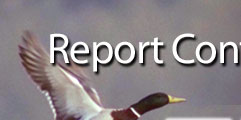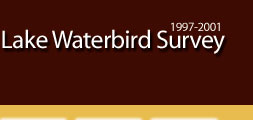 |
 |
 |
||||||||||||
 |
 |
 |
 |
 |
 |
 |
 |
|||||||
|
Preface • Introduction • Study Objectives • Community Participation • Regional, Physical and Ecological Setting Methods • Survey Protocol • Surveyors • Data Compilation • Data Analysis Results • Migration Chronology • Breeding Species • GSL Species Accounts • Species Distribution Discussion • Recommendations • Acknowledgements • Definitions/Abbreviations • Literature Cited Report & Appendices: 1 • 2 • 3 • 4 • 5 • 6 • 7 • 8 21-Year Waterbird Survey Synopsis & Appendices: 1B • 2B • 4B • 5B • 6B • 8B
|
AcknowledgementsThis data set and report would not have been completed without the contributions of many people. We thank Clay Perschon, Great Salt Lake Ecosystem Project Leader, UDWR for enthusiastically supporting this project. Other UDWR personnel who contributed to the organization and analysis of data are Greg Evans, Paul Birdsey and Kirk Poulsen, database design; Frank Howe, Russell Norvell and Dave Mann, study design and data analyses; Mark Davidson, and Jim VanLeeuwan, equipment maintenance. Steve Biggs, Clair Schaffer and Craig Hunt piloted us safely back and forth across the lake for our aerial surveys. Seasonal employees were invaluable in their participation in survey work and data entry. Thanks to Joel Flory, Elizabeth Annand, Henry E. Ford, Shelly Kremer, Lindsey Dewey, and John Neill. John Neill also contributed to the compilation of several of the data tables found in this report. Wallace Gwynn, Utah Geological Survey, provided important data regarding GSL elevation and salinity. Jonathan Bart, USGS, was helpful in providing data analysis consultation. Some financial support was received from USFWS, in addition to editorial comments from Suzanne Fellows and Karen Lindsey. Antelope Island state Park personnel were generous in their contributions of office space for project managers, equipment storage and survey participation. Farmington Bay WMA managers also kindly allowed us to store equipment at their facility and participated in the survey effort. We appreciate the enthusiasm and willingness to participate in this study of other state, Federal and private and corporate site managers. Many private landowners graciously allowed project volunteers access on their properties for surveys. We especially thank our cadre of volunteers who braved the sun, rain, wind and muck to count birds 17 times a year for five years (Table 19). Their effort was enormous and a project of this scope could not have been completed without their participation. We appreciate their support, friendship and respect for Great Salt Lake and her waterbirds.
Table 19. Great Salt Lake Waterbird Survey participants.
This list is unfortunately not all-inclusive. There are several people not on this list that gave time and effort to contribute to this study and our records did not capture their names.
Go to Previous Section (Recommendations) • Go to Next Section (Definitions/Abbreviations)... |